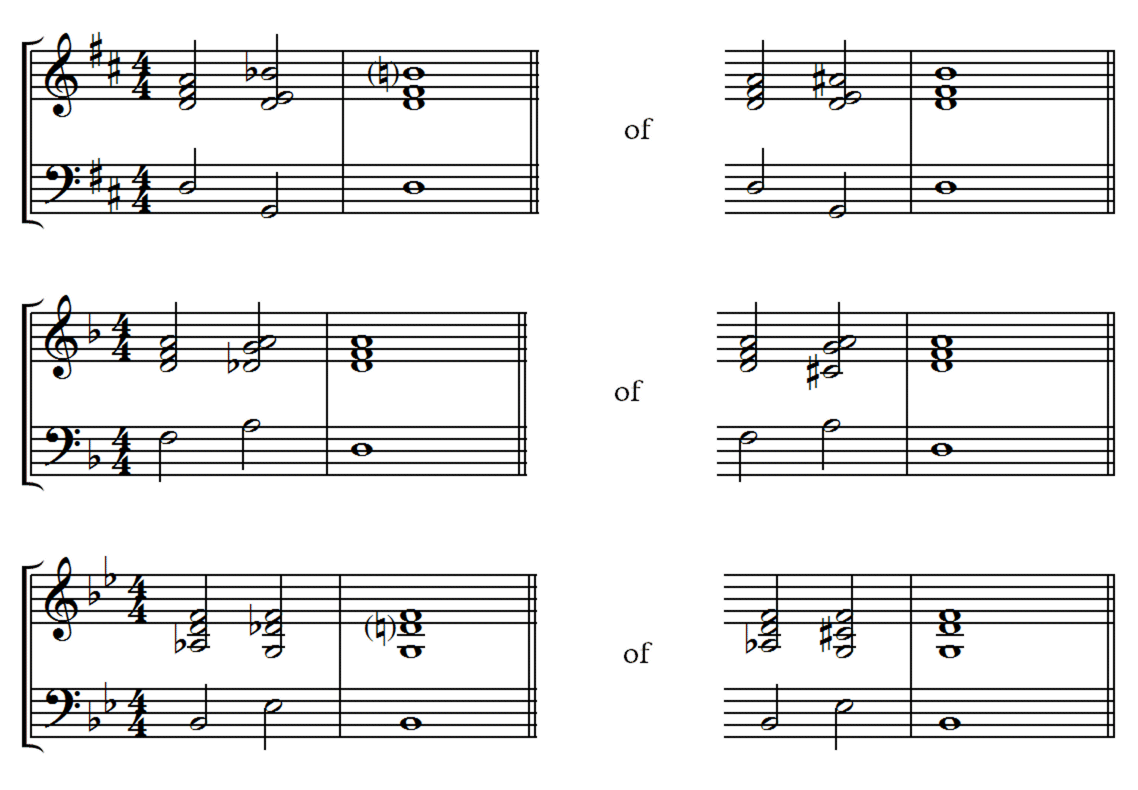 Whenever you write notes that are not in the scale, you have to choose whether to use a sharp or a flat. In most instances only one of them is correct, if you take into account the harmonies. In this exercise, you will be choosing between these two.
Whenever you write notes that are not in the scale, you have to choose whether to use a sharp or a flat. In most instances only one of them is correct, if you take into account the harmonies. In this exercise, you will be choosing between these two.
The exercise is like this. Each time there are given two alternative notations of a short chord progression. Both versions sound the same. Point out the correct version, the left or right one:

Here are the questions as a pdf file and the answers.
Explanation to the answers:
- The B-flat is the minor third in the chord
GM6
. Another way to explain this answer is: the note B-flat is borrowed from the parallel key ofD
minor. - The C-sharp is the major third in the chord
A7
. This note is borrowed from the key of D-major. - The B-flat is the seventh in the chord
E@79
. The C-sharp would be a sharp six, and that is a non-existing addition. - The G-sharp is the major third in the chord
E7
. That chord is the secondary dominant forAM
. Thus, the G-sharp is borrowed from the keyA
minor. - In the key of F-major the chord
D@
is the lowered sixth degree. This harmony is borrowed from F-minor. The variant with the sharp is a raised fifth degree, which hardly ever arrises. - In this case, both answers are correct. In the chord
D7
is added a color. You might interpret this as a sharp fifth (an A-sharp), but you might interpret this as a flat six (een B-flat) as well. Both answered can be argued for. A chord with a sharp fifth is more common than one with a flat six. But on the other hand, in the key of G-major, the tone B-flat is a lot more common the than A-sharp. Pure harmonically, the A-sharp is a bit more correct, but a lot of musicians notate the B-flat, simply because it is easier to read.